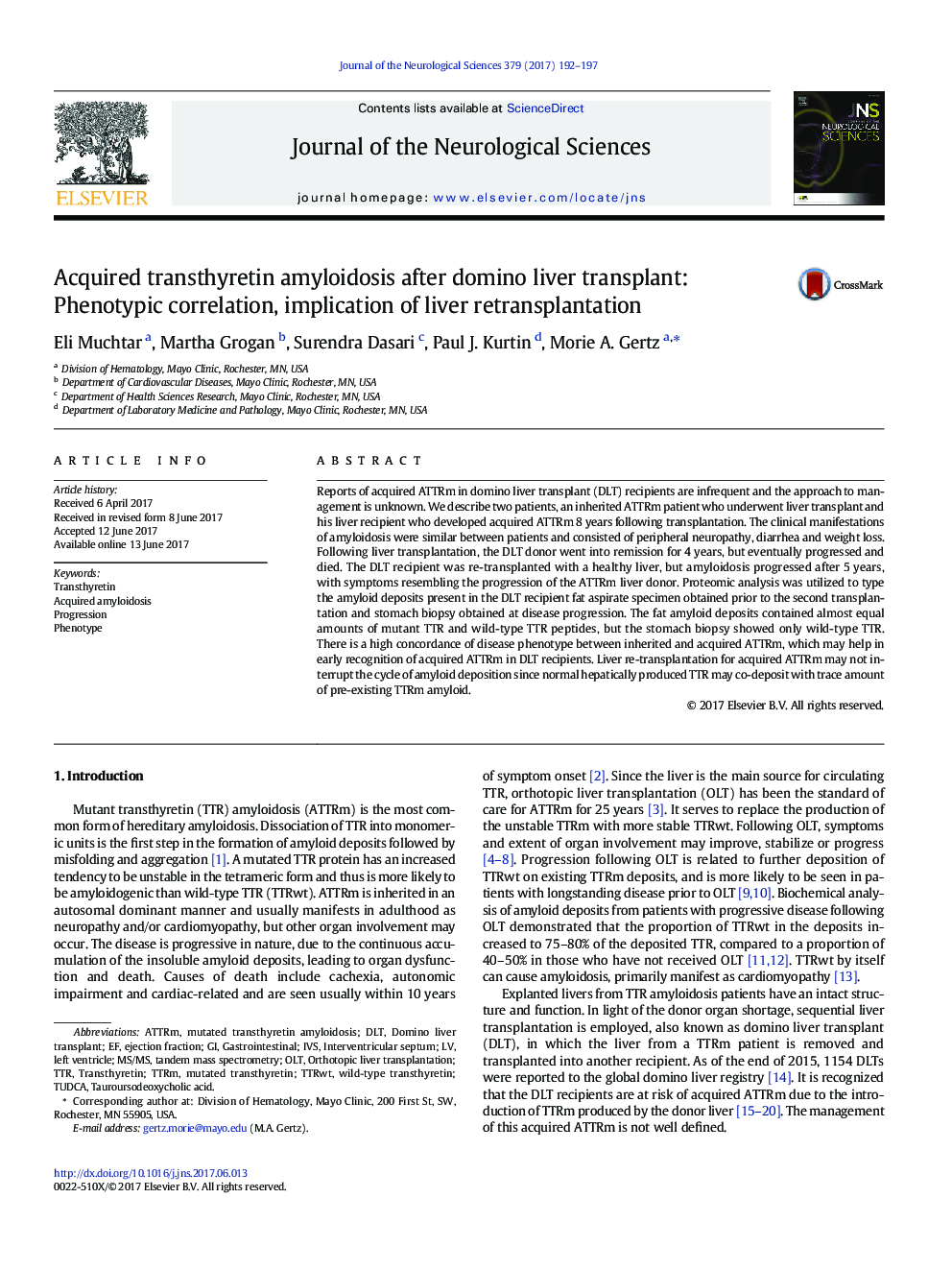| Article ID | Journal | Published Year | Pages | File Type |
|---|---|---|---|---|
| 5502719 | Journal of the Neurological Sciences | 2017 | 6 Pages |
Abstract
Reports of acquired ATTRm in domino liver transplant (DLT) recipients are infrequent and the approach to management is unknown. We describe two patients, an inherited ATTRm patient who underwent liver transplant and his liver recipient who developed acquired ATTRm 8Â years following transplantation. The clinical manifestations of amyloidosis were similar between patients and consisted of peripheral neuropathy, diarrhea and weight loss. Following liver transplantation, the DLT donor went into remission for 4Â years, but eventually progressed and died. The DLT recipient was re-transplanted with a healthy liver, but amyloidosis progressed after 5Â years, with symptoms resembling the progression of the ATTRm liver donor. Proteomic analysis was utilized to type the amyloid deposits present in the DLT recipient fat aspirate specimen obtained prior to the second transplantation and stomach biopsy obtained at disease progression. The fat amyloid deposits contained almost equal amounts of mutant TTR and wild-type TTR peptides, but the stomach biopsy showed only wild-type TTR. There is a high concordance of disease phenotype between inherited and acquired ATTRm, which may help in early recognition of acquired ATTRm in DLT recipients. Liver re-transplantation for acquired ATTRm may not interrupt the cycle of amyloid deposition since normal hepatically produced TTR may co-deposit with trace amount of pre-existing TTRm amyloid.
Keywords
Related Topics
Life Sciences
Biochemistry, Genetics and Molecular Biology
Ageing
Authors
Eli Muchtar, Martha Grogan, Surendra Dasari, Paul J. Kurtin, Morie A. Gertz,
